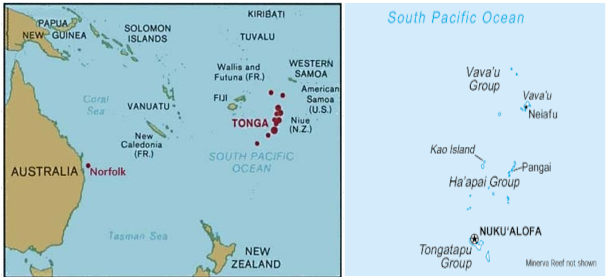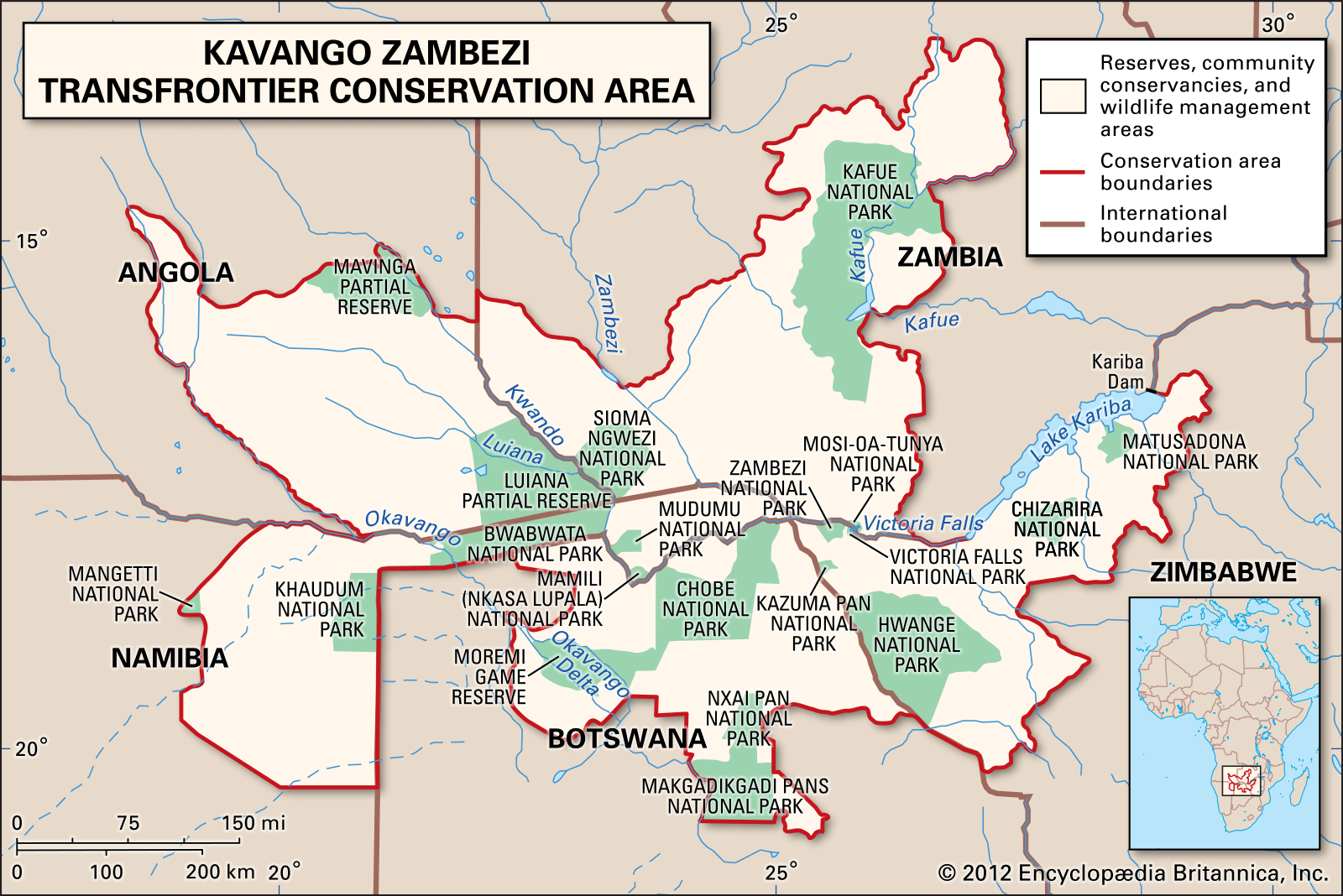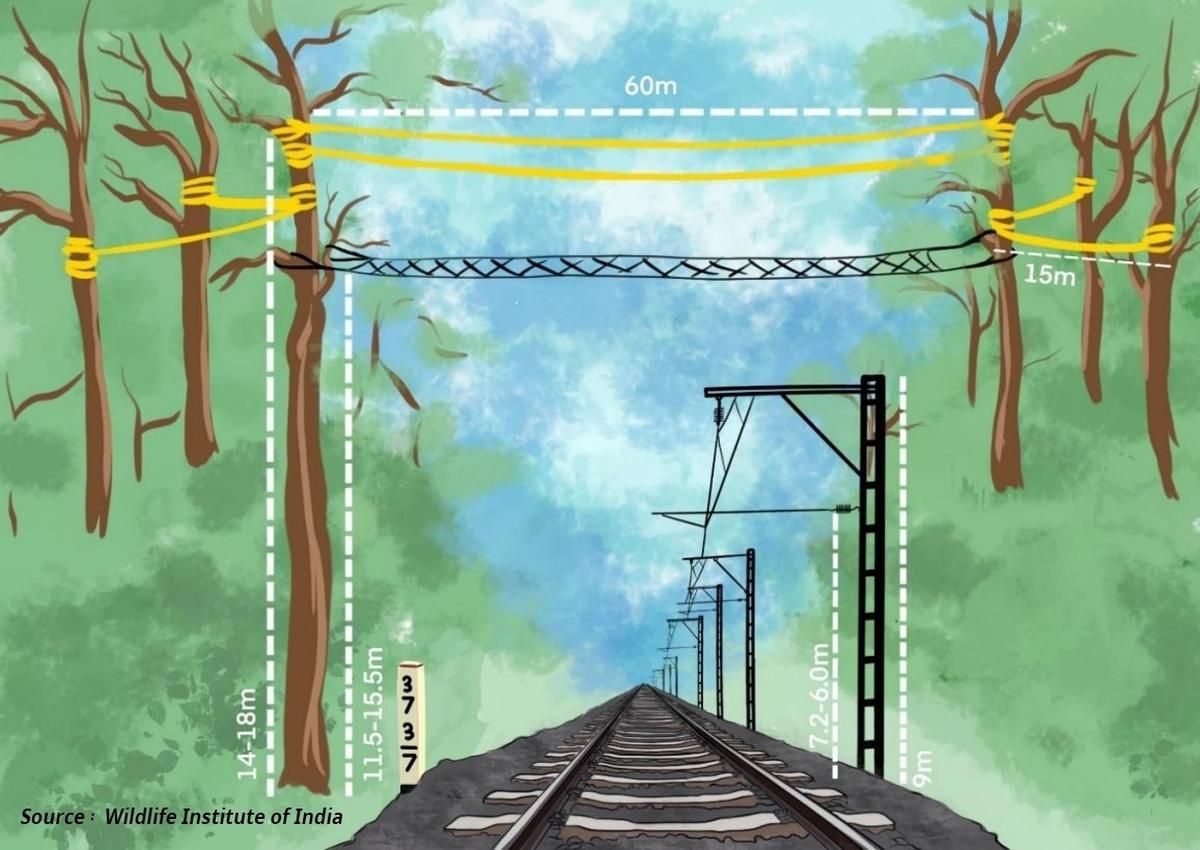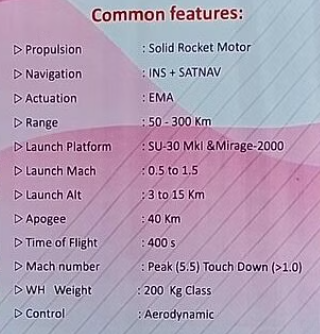Impact of Tonga’s Volcanic Eruption
Tonga’s volcanic eruption could cause unusual weather for the rest of the decade, new study shows.
|
Cooling smoke cloud
|
- Generally, volcanic eruption emit many gases including sulphur dioxide that forms atmospheric clouds.
- The sulphur dioxide transforms into sulphur aerosols which send sunlight back into space before it reaches the surface.
- This shading effect means the surface cools down for a while, until the sulphate falls back down to the surface or gets rained out.
|
- Tonga’s volcanic eruption – Being an underwater volcano, Hunga Tonga produced little smoke, but a lot of water vapour due to enormous heat converts sea water into steam.
- About 100—150 million tonnes, or the equivalent of 60,000 Olympic swimming pools.
- Stratospheric accumulation – All that water in the form of steam ended up in the stratosphere which produces neither clouds nor rain because it is too dry.
Stratosphere is a layer of the atmosphere between about 15 and 40 kilometres above the surface of Earth.
- Depletes ozone layer – Water vapour in stratosphere helps in the chemical reactions which destroy the ozone layer.
- The large ozone hole from August to December 2023 was at least in part due to Hunga Tonga.
- Positive phase of Southern Annular Mode – It came during the summer of 2024 which means there is a higher chance of a wet summer in Australia.
- Lesser contribution to global Warming – Though it is a very potent greenhouse gas, its impact is only about 0.015 degrees Celsius in the high temperatures that existed in last year.
- Lasting impacts in weather – The climate model predicts that
- In the northern half of Australia – Colder and wetter than usual winters up to about 2029.
- In North America – It predicts warmer than usual winters.
- In Scandinavia – It predicts colder than usual winters.
Tonga Island
- It is also known as “The Friendly Islands”.
- Location – It is located in the heart of the South Pacific lying east of Fiji, south of Samoa and north of New Zealand.

- Relief – It consists of 171 coral and volcanic islands spread over 747 sq km with 48 of those inhabited.
- 4 distinctive island groups – They are Tongatapu, Ha’apai group, Vava’u and Niuatoputapu, all lies directly to the West of the international dateline
Reference
The Indian Express| Tonga’s volcanic eruption leads to unusual weather
Nelson Mandela Award for Health Promotion
NIMHANS bags the Nelson Mandela Award for Health Promotion for 2024.
- Instituted by – World Health Organisation (WHO).
- Established in – 2019, upon the initiative of the Ministers of Health of Member States of the African Region.
- Aim – To reward work that has extended far beyond the call of normal duties.
- In recognition of the humility of Nelson Mandela, the Award given to each laureate consists of a plaque.
- Presented by – Group of members including
- The President of the World Health Assembly
- The Director-General of the WHO
- A representative of the Nelson Mandela foundation
The World Health Assembly is the main decision-making body of WHO and is comprised of 194 Member States.
- Beneficiary – Individuals, institutions and/or governmental or nongovernmental organizations
- Eligibility – Beneficiary to have made a significant contribution to health promotion, as per the Statutes for the award.
- Ineligible – Current and former staff members of the WHO and current members of the Executive Board.
- Nomination by – Any national health administration of a Member State of the WHO, or any former recipient of the award.
- The nomination must be accompanied by a written statement of the reasons for proposing the candidate.
- The same candidature may be submitted several times if unsuccessful.
- Proposals are submitted to – The Director-General of the WHO, who submits them to the Award Selection Panel.
- The Award Selection Panel - They in a private meeting, considers the candidates for the Award and proposes the name(s) of the recipient(s) of the award to the Executive Board.
- The proposal is considered by the Executive Board, which designates the recipient(s) of the Award.
- 2024 award – National Institute of Mental Health & Neuro Sciences (NIMHANS), Bengaluru has received the award.
NIMHANS, established in 1974, celebrates 50 years of its formation and the 70th anniversary of its precursor, the All India Institute of Mental Health (AIIMH) in 2024. It is an Institute of National Importance under the Ministry of Health and Family Welfare, Government of India.
- It is a testament to NIMHANS’ dedication and outstanding contributions to promoting mental health and well-being.
- NIMHANS has been at the forefront of mental health and neurosciences, championing innovative approaches to research, education, and patient care.
Mental Health Units are supported in almost all districts of India today through the National Health Mission. India's national tele mental health helpline, Tele MANAS, which was launched in 2022 also recently achieved the landmark of having handled 10 lakh calls.
References
- PIB| NIMHANS receives Nelson Mandela Award for Health
- WHO| Public Health Prizes and Awards
Kavango-Zambezi Trans-Frontier Conservation Area (KAZA-TFCA)
Delegates to the ongoing KAZA 2024 Heads of State Summit in Livingstone, Zambia renew calls to leave Convention on International Trade in Endangered Species of Wild Fauna and Flora (or CITES).
- KAZA-TFCA – It is a 520,000-square kilometre wildlife sanctuary straddling 5 southern African nations that share common borders along the Okavango and Zambezi river basins.
- 5 Countries – Angola, Botswana, Namibia, Zambia and Zimbabwe.

Transfrontier conservation areas (TFCAs) are called as peace parks.
- Inaugurated in – 2012
- Aim – To facilitate cooperation between countries and remove physical impediments to wildlife that traverses their boundaries.
- Conservation areas – It includes 36 proclaimed protected areas such as national parks, game reserves, forest reserves, community conservancies and game/wildlife management areas.
- Ecological diversity – Salt pans and arid grassland, woodland and scrubland, seasonal wetlands and permanent marshes, among other biomes, are all found within its borders.
- Biodiversity – Those areas support some 3,000 species of plants and are home to more than two-thirds of the African elephant population of about 450,000.
- Important sites
- Victoria Falls, a World Heritage site.
- The Okavango delta, the largest site covered by the 1971 Ramsar Convention on Wetlands.
- Issue with CITES – CITES has repeatedly denied them permission to sell off their abundant ivory and other wildlife products.
CITES, an international agreement between government’s aims to ensure that international trade in specimens of wild animals and plants does not threaten the survival of the species.
In 2022, the European Parliament called for a total ban on the import of trophies derived from species listed as endangered under CITES.
References
- Down To Earth| KAZA Summit or Livingstone Summit
- PeaceParks| KAZA-TFCA or Peace Parks
Hoollongapar Gibbon Sanctuary
Railways to build canopy bridges across track in Assam gibbon habitat.
- It is an isolated protected area of evergreen forest.
- Located in – Jorhat district of Assam, India.
- Development – It was officially established & renamed in 1997.
- It was renamed in 2004, formerly known as the Gibbon Wildlife Sanctuary or Hollongapar Reserve Forest.
- In the early 1900s, artificial regeneration was used to a develop well-stocked forest, resulting in the site’s rich biodiversity.
- Canopy
- Upper canopy – It is dominated by the Hollong tree
- Middle canopy – Nahar or Indian Rose Chestnut (State Tree of Mizoram)
- Lower canopy – It consists of evergreen shrubs and herbs.
- Important species
- The hoolock gibbons – It is India’s only gibbons.
- The Bengal slow loris – It is Northeastern India’s only nocturnal primate.
|
Hoolock gibbon
|
- It is one of the 20 species of apes on earth.
- It is known for its vocalisation, spends much of its time on the upper canopy of tall trees called as Hoolongapar.
|
|
Hoollongapar
|
- Scientific Name - Dipterocarpus macrocarpus
- It rises about 12 to 30 m and having straight trunks.
- Other species found in the top canopy include Sam, Amari, Sopas, Bhelu, Udal and Hingori.
|
Indian gibbon is only apes found in India. Hoollongapar Gibbon Sanctuary is the only sanctuary in India named after a gibbon due to its distinction for containing the densest gibbon populations in Assam.
- Threat – A 1.65-km-long Mariani-Dibrugarh railway track divides sanctuary into 2 halves which has disturbed the arboreal nature of the ape, putting it at risk while crossing the track.
- Conservation measures – The Northeast Frontier Railway (NFR) has plans to construct canopy bridges for gibbons to move across a railway track.
- Canopy bridges – They are designed by the WII in consultation with NFR, to facilitate easy movement of the arboreal species.
- Safety nets will be installed below the main twin-rope bridge to save the species accidentally falling off the bridges.
- The canopy rope bridges will be installed in such a way that lianas and creepers can be guided along them to make it look as natural as possible.

References
- The Hindu| Canopy Bridges in Hoollongapar Gibbon Sancturay
- Kaziranga| Hoollongapar Gibbon Sanctuary
RudraM-II Missile
India successfully test-fires RudraM-II missile from a Su-30 fighter jet of the Indian Air Force (IAF) off the coast of Odisha.
- It is India's 1st indigenously developed air-launched ballistic missile (ALBM).
- Developed by – Defence Research and Development Organisation (DRDO).
- Aim – To neutralise several types of enemy assets.
- Mode – It is a solid-propelled, air-to-surface missile.

- Significance – They are ideal weapons to target Chinese static infrastructure, which have mushroomed in Tibet largely since the standoff at the Line of Actual Control (LAC) began in 2020.
|
RudraM
|
- Role – It is a series of anti-radiation & land-attack missiles developed by DRDO.
- Anti-radiation missiles – They target enemy equipment that emits electromagnetic radiation, ie, radars and active jammers.
- RudraM-I – It will only be used in anti-radiation roles and has a range of 180 kilometres.
- RudraM-II and RudraM-III – They both will be ALBMs, with ranges of 300 kms & more than 600 kms, respectively.
- 2 different variants
- An anti-radiation seeker to destroy air defence radars.
- An IIR seeker to destroy heavily fortified bunkers.
- Terminal velocity – More than a Mach, making them very hard to defend against.
|
Air-launched ballistic missile (ALBMs) are cheaper than cruise missiles and easier to manufacture. Their high speeds, terminal velocity, high manoeuvrability, and quasi-ballistic trajectory make them extremely difficult to intercept by air defence systems.
References
- The Indian Express| Successful Trial of RudraM-II Missile
- Swarajya| RudraM-II can threat China



